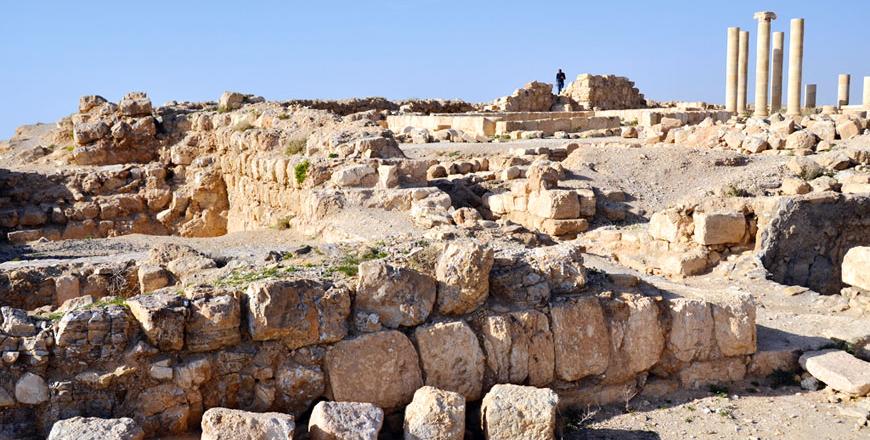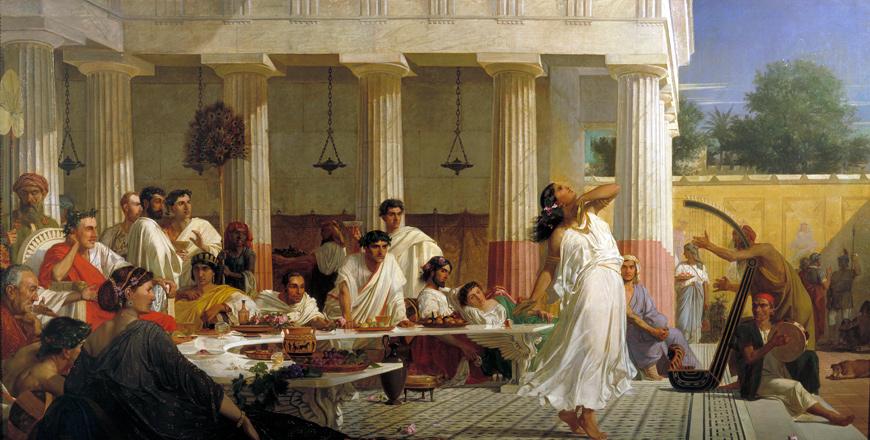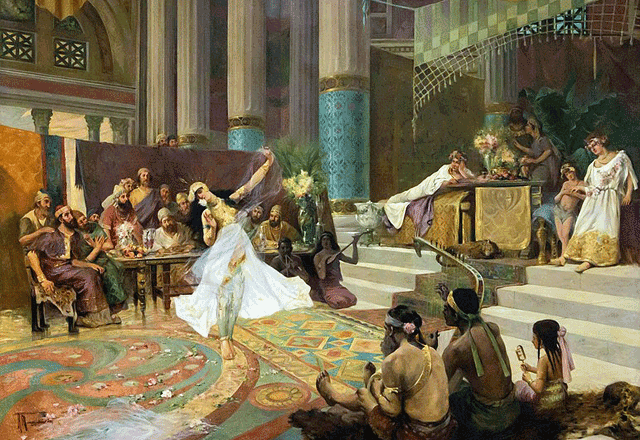You are here
Archaeologists breathing life into 2,000-year-old Citadel of Machaerus
By Dana Al Emam - Oct 27,2015 - Last updated at Oct 27,2015

The newly erected Herodian columns are seen at Machaerus, the first success of its kind in the holy land (Photo by Muath Freij)
MUKAWIR — Pilgrims and visitors to the 2,000-year-old Citadel of Machaerus will be able to authentically envision the point in history when Salome danced and when St John the Baptist was beheaded, thanks to an archaeological project currently under way.
The project at the Herodian royal castle, carried out since 2009 by the Hungarian Academy of Arts (MMA), is being done in collaboration with the Department of Antiquities, represented by Director General Monther Jamhawi.
The site, sitting atop a hill some 800 metres above sea level and overlooking the Dead Sea, some 32km southwest of Madaba city, was the fortress of Herod the Great and a centre of power in the ancient world.
From the top of the hill, even Jerusalem would have been visible, with the smoke of the sacrificial temple's offerings rising from its altars, MMA Research Director Gyozo Vörös told The Jordan Times in a recent interview.
The hilltop of Mukawir, the Biblical Machaerus, is where Salome is believed to have danced for Herodus Antipus who, impressed by her performance, promised her anything she wanted.
Encouraged by her mother, Salome demanded John the Baptist's head on a platter. His subsequent execution also took place in the fortress.
Its location as St John the Baptist's prison and place of execution was later confirmed by the ancient historian Flavius Josephus.
The site, a Herodian palace and fortress, is also important for Judaism.
The site is thus historically significant to Christians, Muslims and Jews, Vörös added, stating that it is under the protection of the Islamic awqaf (religious endowments) and exists as a memorial of Prophet Yahya Bin Zakariyya, also known as St John the Baptist.
"The importance of Machaerus is only comparable with Mount Nebo and the Baptism Site. The three historical places, as pilgrimage destinations, provide an excellent full-day trip for visitors," he said.
The excavation team is employing theoretical architectural reconstruction as its first step towards the restoration and presentation of the monument. Through this process, archaeologists were able to reach new findings.
“We are using exclusively original architectural elements for our anastylosis-reconstructions to provide the pilgrims and visitors with an authentic and reliable historical place,” Vörös said.
Based on architectural designs of the palace, the team has successfully re-erected two Herodian columns at the site, the first success of its kind in the holy land (including Palestine), according to the expert.
The excavation project, which is scheduled to conclude in 2029, seeks to offer pilgrims and visitors to the site an “attractive but authentic” monument presentation with a visitor’s centre in the former Herodian cistern.
Vörös has documented the MMA’s work at the site, as well as work of previous archaeological teams, in two volumes titled Machaerus I and Machaerus II.
HRH Prince Hassan wrote the forward to the second publication, highlighting the site’s significance for Muslims as well as Christians.
“The landscape in which Mukawir sits is one that any pilgrim or archaeological school, cannot fail to be mesmerised by,” he wrote.
The prince also invited those who visit the site to “discover the roots of their faith”, citing the visits of Pope John Paul II in 2000 and Pope Benedict XVI in 2009 as a sign of its significance and the attention it deserves.
Based on the excavations and studies of the site, the team reached the conclusion that Machaerus was inhabited during three periods: the Hasmonean period, the period after Herod the Great’s remodelling and during its inhabitation by Jewish rebels during the first Jewish revolt against Rome.
The remains of Herod’s palace suggest it once included a courtyard, a Roman-style bath, a triclinium for fancy dining, and a formal peristyle courtyard where it is assumed Salome danced for King Herod.
The site also includes a semicircular apse in the axial centre of the courtyard, marking the place of King Herod’s throne, which was later passed on to his son Tetrarch Herod Antipas.
“A significant result of our excavations was the discovery of the extraordinary depths of the citadel,” Vörös said, citing the discovery that the walls of the interior of the western bastion included 30-foot-high (around 9.2 metres) walls intact, whereas it was previously believed the walls were less than five feet tall (1.5 metres).
He added that the MMA team had discovered and fully excavated the citadel’s 50-foot-deep (18 metres) Hasmonean cistern, which remained in use throughout the Herodian period.
Related Articles
AMMAN — Prior to 1968, the hilltop of Machaerus, overlooking the Dead Sea near Mount Nebo was an untouched “virgin” site, according to Hunga
AMMAN — For decades, scholars have linked the biblical tradition about the beheading of John the Baptist with the material evidence found at
AMMAN — Isolated in the middle of a rocky mountain plateau that dominates the Dead Sea lie the ruins of the Herodian fortress Macaereus, whe



















